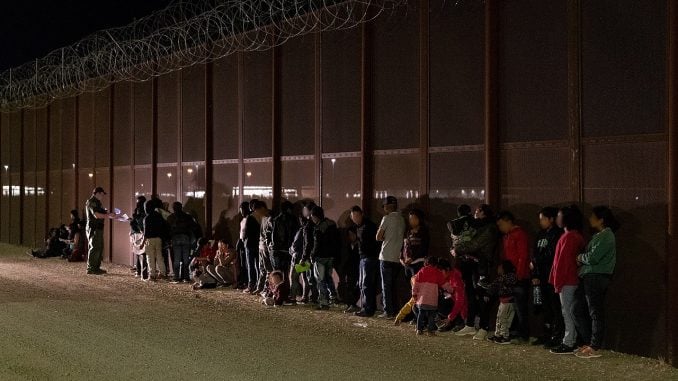
WASHINGTON, D.C. — The Trump administration said Monday it will end asylum protections for most migrants who arrive at the U.S.-Mexico border — the president’s most forceful attempt yet to block asylum claims and slash the number of people seeking refuge in America.
The new rule, expected to go into effect Tuesday, would cover countless would-be refugees, many of them fleeing violence and poverty in Central America. It is certain to face legal challenges.
According to the plan published in the Federal Register, migrants who pass through another country — in this case, Mexico — on their way to the U.S. will be ineligible for asylum.
The vast majority of people affected by the rule are from Central America. But sometimes migrants from Africa, Cuba or Haiti and other countries try to come through the U.S.-Mexico border, as well.
There are some exceptions, including for victims of human trafficking and asylum-seekers who were denied protection in another country. If the country the migrant passed through did not sign one of the major international treaties governing how refugees are managed (though most Western countries signed them) a migrant could still apply for U.S. asylum.
Mexican Foreign Relations Secretary Marcelo Ebrard said Monday that his country “does not agree with any measure that limits access to asylum.” Mexico’s asylum system is also currently overwhelmed.
Trump administration officials say the changes are meant to close the gap between the initial asylum screening that most people pass and the final decision on asylum that most people do not win.
Attorney General William Barr said that the United States is “a generous country but is being completely overwhelmed” by the burdens associated with apprehending and processing hundreds of thousands of migrants at the southern border.
He also said the rule is aimed at “economic migrants” and “those who seek to exploit our asylum system to obtain entry to the United States.”
ACLU attorney Lee Gelernt, who has litigated some of the major challenges to the Trump administration’s immigration policies, said the rule was unlawful and the group planned to sue.
“The rule, if upheld, would effectively eliminate asylum for those at the southern border,” he said. “But it is patently unlawful.”
U.S. law allows refugees to request asylum when they arrive at the U.S. regardless of how they arrive or cross. The crucial exception is for those who have come through a country considered to be “safe,” but the Immigration and Nationality Act, which governs asylum law, is vague on how a country is determined safe. It says pursuant to a “bilateral or multilateral agreement.”
Right now, the U.S. has such an agreement, known as a “safe third country,” only with Canada.
Mexico and Central American countries have been considering a regional compact on the issue, but nothing has been decided. Guatemalan officials were expected in Washington on Monday, but apparently a meeting between President Donald Trump and Guatemalan President Jimmy Morales was canceled amid a court challenge in Guatemala over whether the country could agree to a safe-country agreement with the U.S.
The new rule also will apply to the initial asylum screening, known as a “credible fear” interview, at which migrants must prove they have credible fears of returning to their home country. It applies to migrants who are arriving to the U.S., not those who are already in the country.
Acting Homeland Security Secretary Kevin McAleenan said additional funding given by Congress for aid at the U.S.-Mexico border isn’t enough.
“Until Congress can act, this interim rule will help reduce a major ‘pull’ factor driving irregular migration to the United States.”
The treaties that countries must have signed according to the new rule are the 1951 Convention relating to the Status of Refugees, the 1967 Protocol or the Convention against Torture and Other Cruel, Inhuman or Degrading Treatment or Punishment. But, for example, while Australia, France and Brazil have signed those treaties, so have Afghanistan and Libya, places the U.S. does not consider safe.
Along with the administration’s recent effort to send asylum seekers back over the border, Trump has tried to deny asylum to anyone crossing the border illegally and restrict who can claim asylum, and the attorney general recently tried to keep thousands of asylum seekers detained while their cases play out.
Nearly all of those efforts have been blocked by courts.
Tens of thousands of Central American migrant families cross the border each month, many claiming asylum. Border facilities have been dangerously cramped and crowded well beyond capacity.
People are generally eligible for asylum in the U.S. if they fear return to their home country because they would be persecuted based on race, religion, nationality or membership in a particular social group.
During the budget year for 2009, there were 35,811 asylum claims, and 8,384 were granted. During 2018 budget year, there were 162,060 claims filed, and 13,168 were granted.



